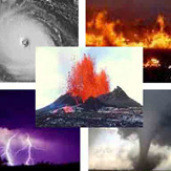
By Erin Booke
The Dallas Morning News
This winter storm is rare for us North Texans, and sometimes we’re not sure what to do. Hundreds of thousands in the area have been without power for several hours, which means refrigerators and freezers are out of commission.
Most of us likely don’t have backup generators. Many are also lacking water due to frozen pipes. That leads to a lot of questions about food safety and what to eat and drink.
Here are some tips from the United States Department of Agriculture’s Food Safety and Inspection Service and Texas A&M AgriLife.
* Keep refrigerator and freezer doors closed. A refrigerator will keep food cold for about 4 hours if the door is kept closed. A full freezer will hold its temperature for about 48 hours (24 hours if half-full).
* Place meat and poultry to one side of the freezer or on a tray to prevent cross contamination from thawing juices. Group other foods together in the fridge to create an “igloo effect,” which can help keep the food colder.
* Do not, we repeat, do not try to store your food outside, even if it’s freezing. The USDA says that outside temperatures are inconsistent, causing chilled food to enter the “danger zone” of warmer than 40°F, allowing bacteria to grow, and frozen food could begin thawing. Food kept outside also could be exposed to animals and unsanitary conditions. Heated food, meanwhile, should be kept warmer than 140°.
* The cold outdoor temperatures can come in handy, though. You can make ice by filling buckets or cans with water and leave them outside to freeze. Use this ice to put in your freezer, refrigerator or coolers to keep food cold, according to the USDA.
* Try to eat shelf-stable pantry goods and don’t try to cook if your power goes out. Think crackers, beans, nuts, PB&J sandwiches, and cereal with shelf-stable plant-based milk.
* Once power returns, check the temperature inside your refrigerator and freezer. If any perishable food (such as meat, poultry, seafood, dairy, eggs or leftovers) has been above 40°F for two hours or more, get rid of it.
* Remember the key rule: When in doubt, throw it out.


